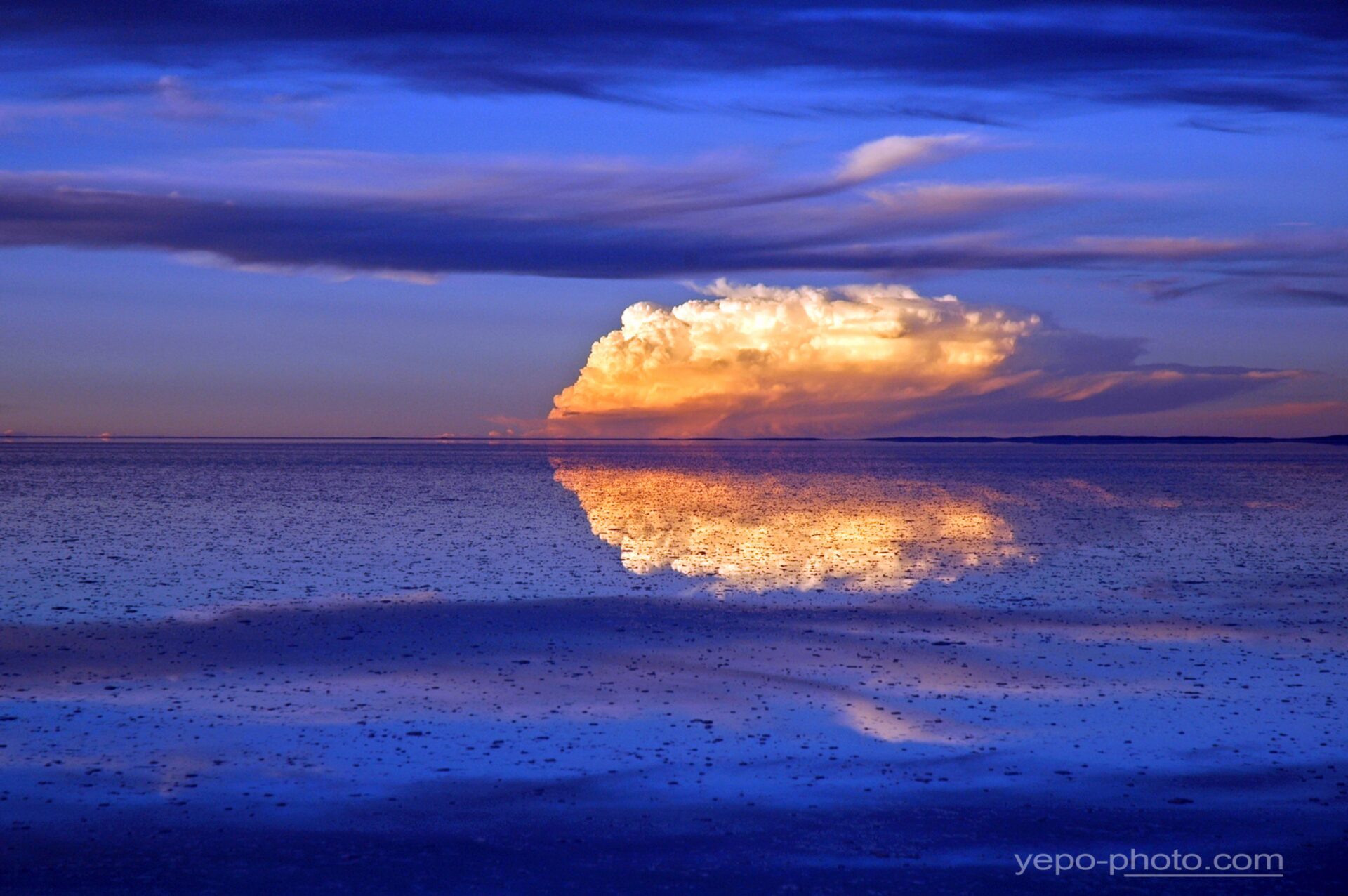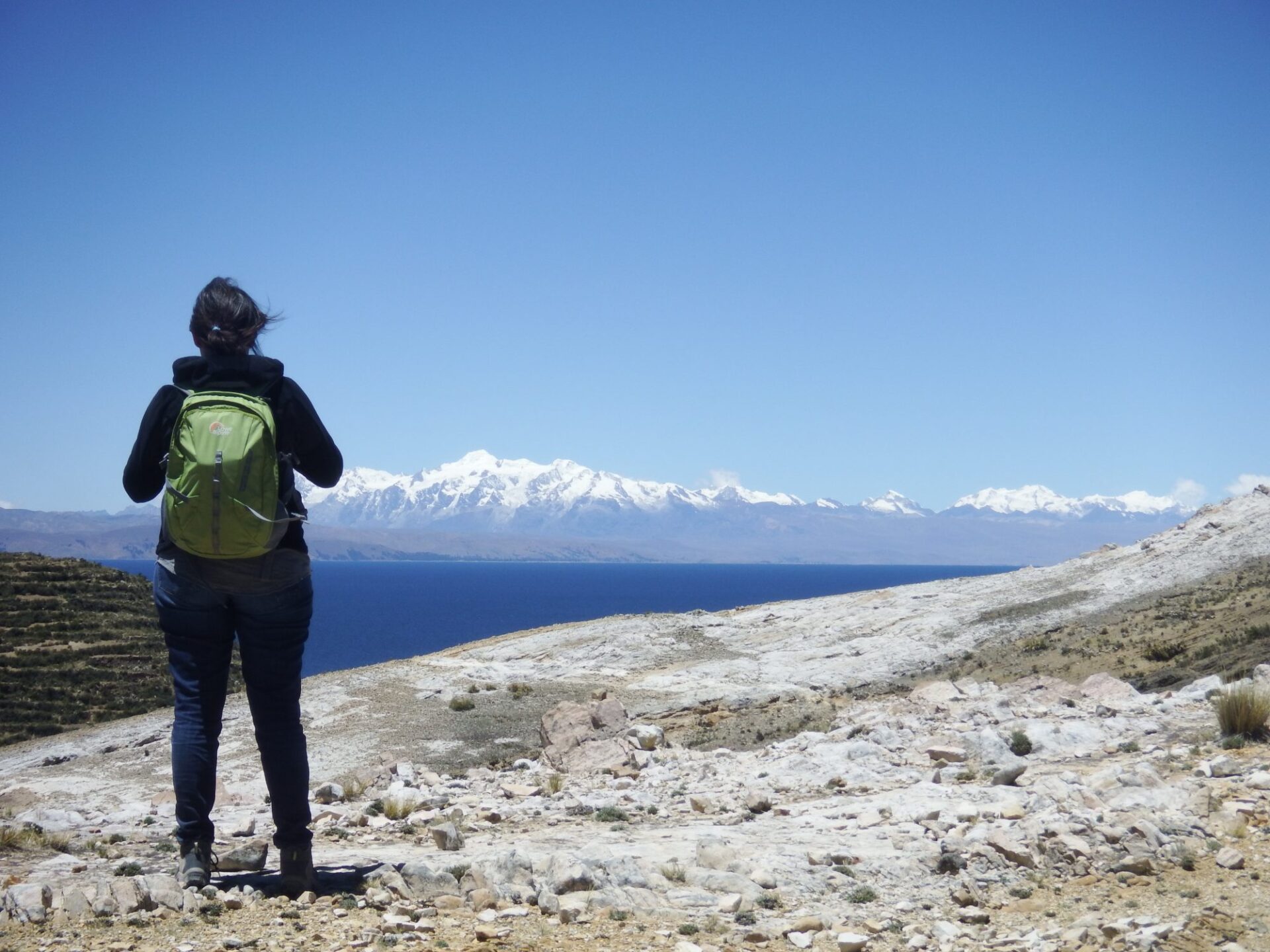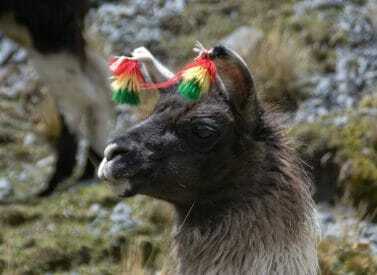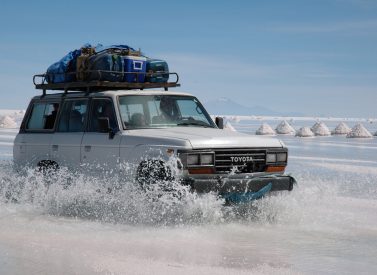A travel diary of a day and night on Bolivia’s Salar de Uyuni
 by Kathy Jarvis on 9th August, 2019
by Kathy Jarvis on 9th August, 2019

Bolivia’s Salar de Uyuni has inspired travellers for decades – read our travel expert’s guide to a day and night on these magnificent salt flats.

Tunupa Mountain
He writes:
I woke around 5.30am, put on my down jacket and left the (relative) warmth of my salt hotel to walk down to watch the coldest sunrise of my life with a flamboyance of flamingos.
Having slept well on a bed made of salt in a room made of salt bricks with a salty floor, which was surprisingly soft to the touch, I was amazed to see the flamingos already starting to become active after a very, very cold night.
That anything has survived in such a testing environment is testament to the will of life.
Most mornings involve an early start so you can be in position to see dramatic sunrises over the
the largest salt flats in the world at (10,582 square kilometres / 4,086 sq. miles).

Uyuni, lakes and llamas
Morning
After breakfast, you get into your 4×4 (space for 4-6 people) and drive over a variety of terrains.
Most days involve 60-90mins of driving followed by a 30-40 minute visit. Top-end tours have new and comfy vehicles, budget tour cars can be more worn and basic – with a lot of drive time, a comfortable car is paramount.
In the dry season (April to November), the salt flats offer a terrain of crazy patterns and the chance to take trick-of-the-eye photos.
In the wet season (Dec-Mar), the flats can flood, helping to create what’s been described as the world’s largest mirror, a flat and reflective pool stretching for miles.

Vehicle on the salt flats
In the afternoon
It’s not just salt – there are villages to visit as well as small islands, replete with cacti, such as Inca Huasi – and keep an eye out for flamingos, vizcacha, foxes and more.
Another major pull are the lagoons (green, red and more), coloured via metals and microbes that live there.
Not all the driving is on salt, either. There are red desert sand routes, as you speed among Dali-esque rock sculptures while under the gaze of giant volcanoes like Licancabur.
By the afternoon, your driver and guide get you to your hotel to settle in, ready for a local dinner and then the chance to star gaze at night.

Falmingoes
In the evening
Stepping out after sunset and dinner into clear skies, you will feel part of the cosmos, completely among the stars. There is no light pollution here and the moon will look like a small marble, waiting for you to pluck it from the dark velvet night.
In Uyuni, at night I felt as much a part of the clear skies as a terrestrial being.
So, yes, it’s cold, yes it’s high and yes you spend a fair bit of time in a 4×4, driving around, but the Uyuni Salt Flats will surely steal your heart once you step into this otherworldly environment.

Relaxing in Uyuni
Top tips for Uyuni Salt Flats
- Wrap up warm and take good clothes
- Be prepared for tough conditions but with amazing rewards
- Be well acclimatised to high altitude before arriving
- Take an English-speaking guide to really enhance the tour
- Pick a tour with a good quality vehicle – it’s a driving trip
- Spend as much time as you can outside the hotel, looking at the sky
- Take a full 3-day trip, to enjoy the flats
- Combine with San Pedro de Atacama

All terrain in Uyuni
Practical information – at a glance
Sleeping in Uyuni
We use community-owned and run hotels and it is a real privilege to be hosted by people in these remote communities.
The hotels are built of local materials, salt or stone, and are designed to be as ecological as possible in this fragile environment. All rooms have a private bathroom with solar hot water and heating.
This is one of the poorest parts of Bolivia where there is a problem of depopulation as local Aymara communities really struggle to survive. The hotels are on land rented from the communities and will be passed entirely into community hands in 15 years.

Uyuni local
What to wear in Uyuni
You need everything from plenty of warm clothes to deal with way below freezing temperatures and super strong sun cream to protect you from a fiercely strong daytime sun.
For the cold: Hats, gloves, down jacket, thermals, windproof jackets and several layers of clothes are vital, as are decent shoes to help keep extremities warm, plus lip balm.
For the sun: Very high factor sun cream/block for face and lips, hat, high UV protection sun glasses, bandana for neck, long-sleeved t-shirts and trousers to protect your body from the sun’s rays.

Dressed for lunch
Getting to the Salt Flats
Most people will access the salt flats via the town of Uyuni, which has a famous train cemetery to visit and well worth a look.
From La Paz, there is a one-hour direct flight to Uyuni, an overnight bus (10 hours) or a bus and train combination (12 hours). There are also buses (4 hours) from Potosi.
The other main entry point is crossing into Bolivia from Chile’s San Pedro de Atacama.
Share


 a Tailor Made Tour
a Tailor Made Tour 



 a Group Tour
a Group Tour 








